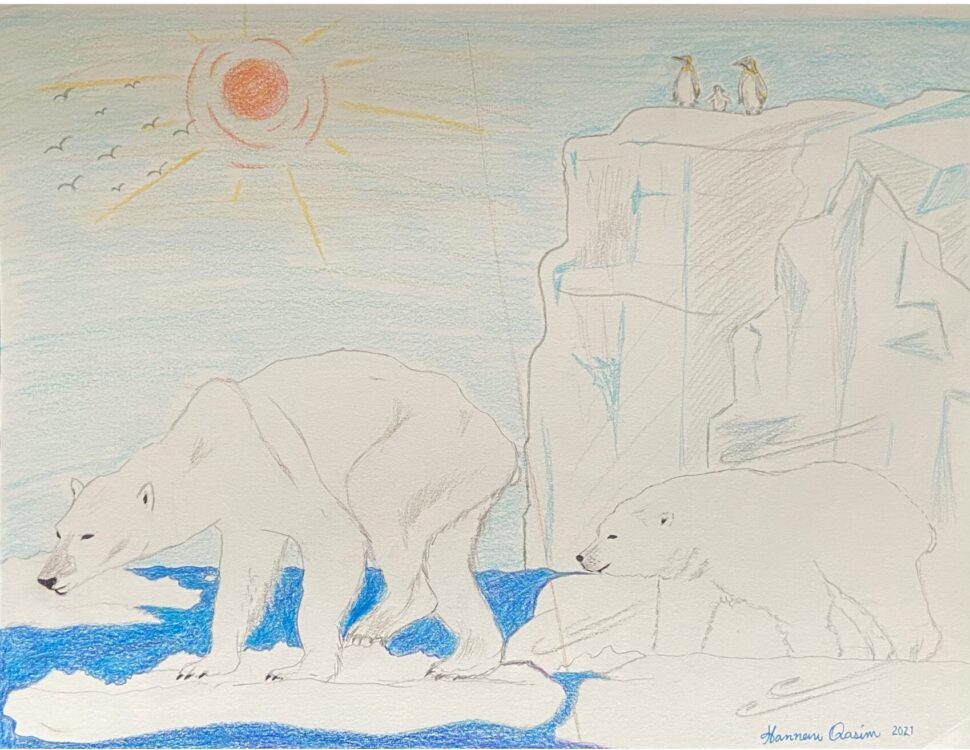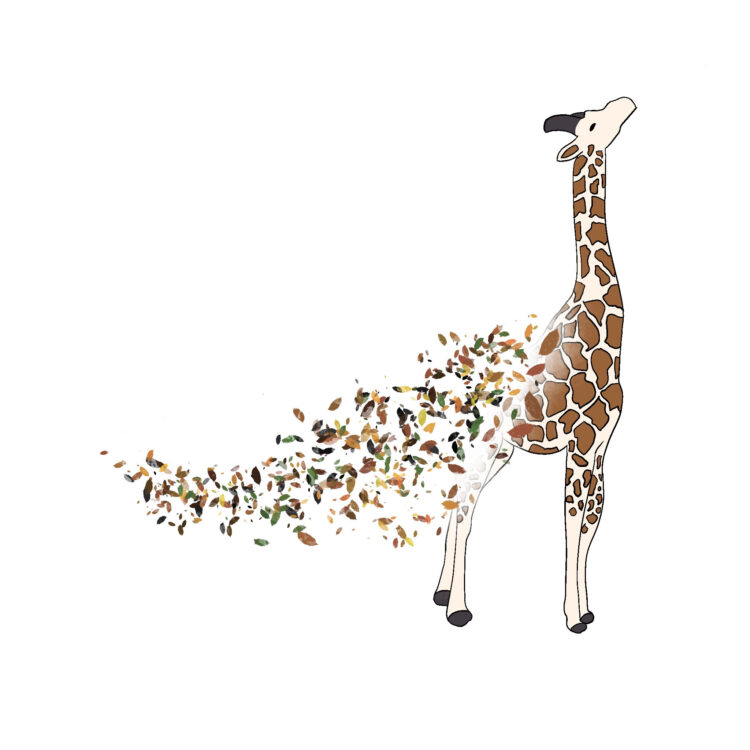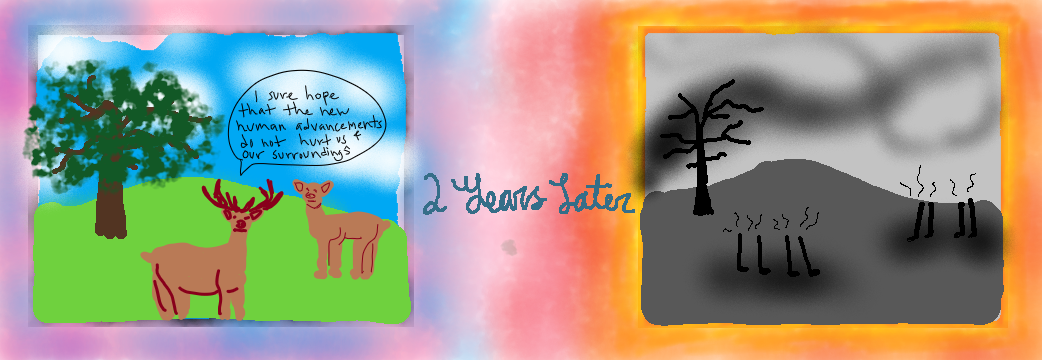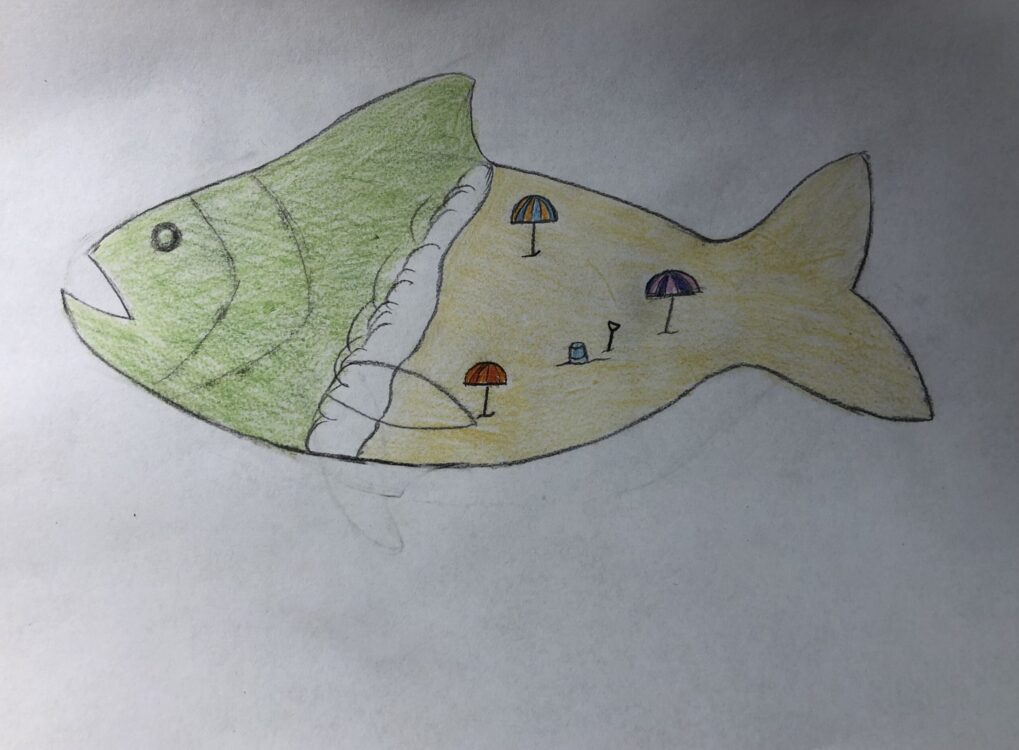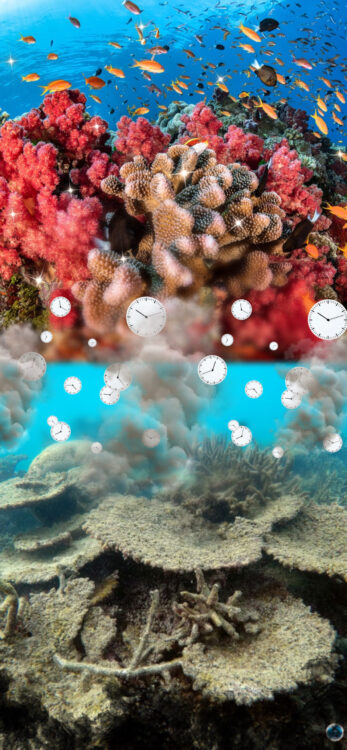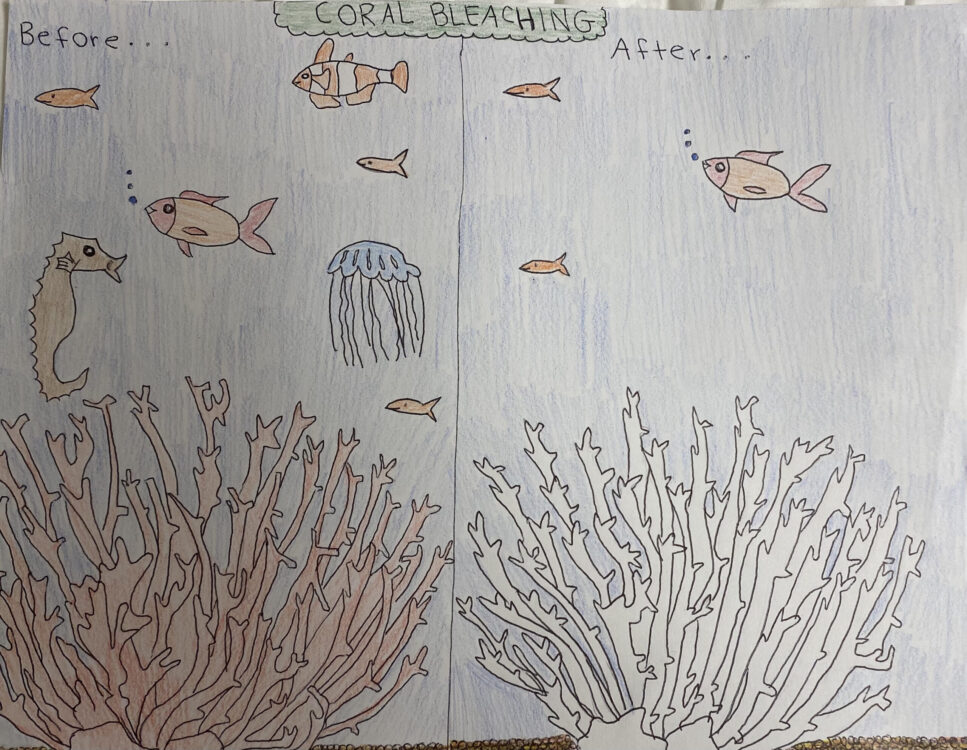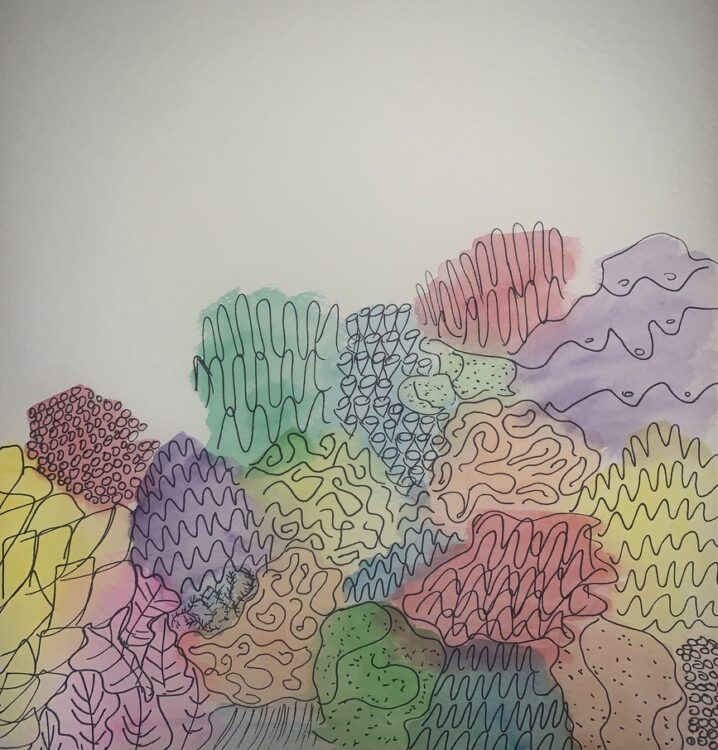The Common Reader vividly illustrates the current environmental crises as more living creatures are affected than we ever imagined. We have heard many sad stories about melting glaciers and hungry polar bears. Hannan Qasim's sad drawing shows us that tragedies happen every day. In Qasim’s words, “the drawing I created represents climate change in the arctic environment. …The right side of the drawing shows the arctic environment before climate change, where the polar bears were not affected, along with having penguins standing on the glaciers. The left side shows the polar bear as it became an adult, the environment changed, and the ice was melting, which affected its way of life. The adult polar bear is shown to be dying from starvation and heat. There are no glaciers or other wildlife in the background.”
Aeryn Stroble shares the same worry about climate change causing animal extinction by drawing a giraffe fading into leaves and disappearing.
Mia Nixon also created a digital artwork to reflect on animals’ suffering. In her work, the comparison between before and after is beyond tragic. As she explains, “the harsh reality is that animals and our environment are truly destroyed because of our actions as a society.” Nixon suggests that the convenience of our daily life, made possible by large corporations, is making life more difficult for animals and nature. In her own words, “more attention needs to be brought to this issue and change needs to ensue.”
Also concerning climate change, Kaitlyn Hansen's poem describes the heartbreaking scene of “muffled chirps of birds” and “washed up fish” and the black oil poured into the ocean. Hansen writes:
The effect of climate change
Spewing throughout
The world
Noticeable
But never changing
As we shift our attention to the creatures living in water, Gretchen Hartenstein and Alexandra Shaw express concern about animals harmed by environmental crises and pollution. Hartenstein's drawing is based on research about eutrophication – when an excess amount of nutrients causes uncontrolled algae growth in water bodies, resulting in the dissolution of oxygen and the suffocation of living creatures in the water. The students drew the green fish head representing the ocean beside the tail representing a beach, illustrating the excess growth of algae invading a beach. The scene is contained within the body of a dead fish, showing “how humans are both the perpetrators in making this issue worse and that this will soon come back to hurt us…. This shows how it is affecting wildlife as well.” Shaw uses a disposable bowl to create a picture of a turtle surrounded by plastics and garbage in the water. “This artwork represents marine life and the environmental issues that come along with it,” Shaw explained. Using a disposable bowl as the art material, which could also be a form of garbage in the ocean, the student suggested that “[this artwork] shows how bad pollution is getting and it is killing the sea creatures.”
Many students researched coral reefs and the threats they are facing. In the artwork above, an anonymous student compares two photographs of coral reefs to demonstrate the damaging effects of pollution. The student adds clocks and smoke to emphasize the damage that has been done over time and explains that “saving the coral reefs is an environmental issue I care about because they are very important to oceanic life.” Likewise, Carly Sofro’s drawing illustrates what healthy coral reefs are supposed to look like versus reefs impacted by coral bleaching. Sofro underlines the impact of coral bleaching in the artwork by mentioning, “as you can see in my drawing, there is a loss of sea creatures, because coral bleaching is harmful and its killing many different sea species.”
Finally, Chloe Murphy wants everyone to remember the colorful coral reefs and the endeavors of people who are protecting nature. Murphy's drawing of a coral reef demonstrates the scientific effort to restore reefs from bleaching, providing an example of the work that is being done to combat destruction of the ocean environment.

